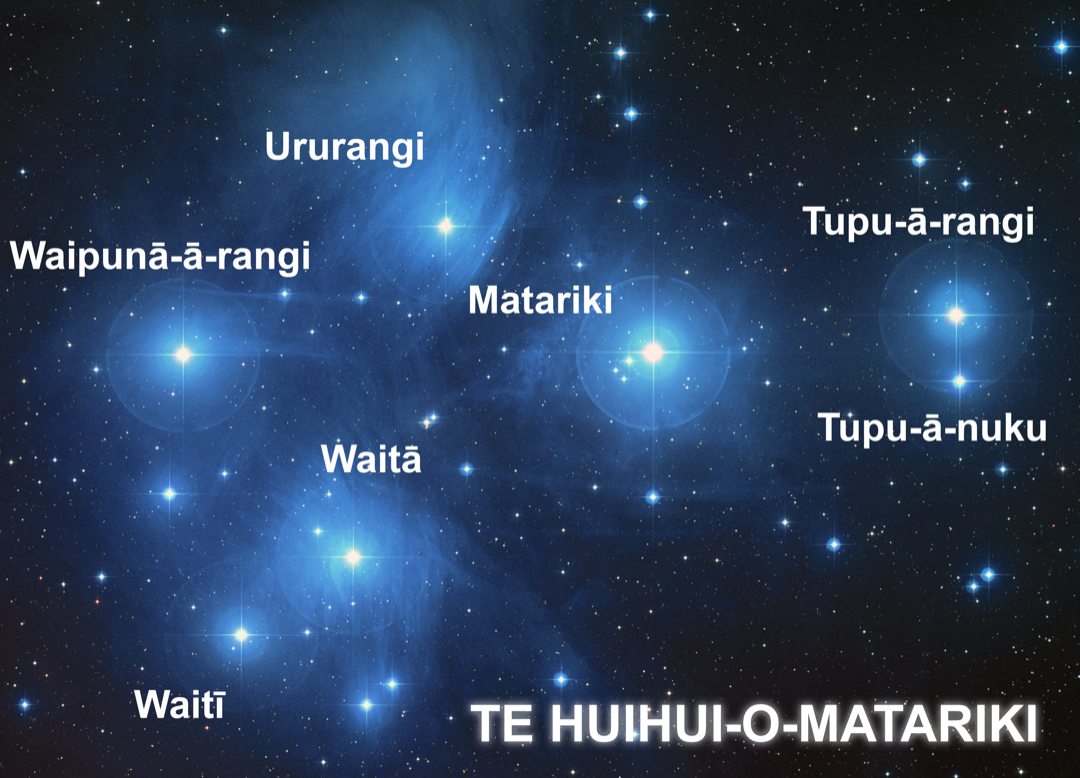Last week was Matariki. In Māori culture, Matariki signifies the beginning of the New Year. Close to the southern hemisphere’s winter solstice, it is the time when the Pleiades group of stars (or Seven Sisters) rises just before dawn during the week before a new moon. The Māori used the stars to measure the seasons by watching which stars rose just before the sun did. Matariki rises just before the sun nearest the winter solstice when the sun appears to change direction on the horizon. The exact date varies each year as it is based on the lunar calendar. This booklet has some great detail about how to find Matariki and how the Māori used it to measure the seasons.

It is celebrated all across New Zealand and is the most important event in the Māori calendar, although it wasn’t celebrated much between 1940 and 2000 due to the oppression of the Māori culture. Matariki signifies when and how good the harvest will be in the coming year. It signifies new beginnings and is the time when dead spirits can be released to pass through into the spirit world.
Matariki is the Māori name for the cluster of stars and the name of the brightest central star. It literally translates to mean “eyes of the gods” or “tiny eyes”. The legend goes “that when Ranginui, the sky father, and Papatūānuku, the earth mother were separated by their offspring, the god of the winds, Tāwhirimātea, became angry, tearing out his eyes and hurling them into the heavens.” If you would like to read more about the legends surrounding Matariki check out this article by Kiwi Families or the Encyclopedia of New Zealand entry.
Matariki was the end of the harvest of crops of berries and kumara (a sweet potato), but also marked the time when birds and fish should be caught, cooked and preserved to eat later in the winter. The Kereru (New Zealand Pigeon) are particularly abundant and easy to catch at this time of the year as they feast on the plentiful berries of the forest. The birds were then cooked in and preserved in their own fat. To see a gourd used for preserving the birds, check out the Museum of New Zealand Te Papa Tongarewa. The annual migration of fish at this time of year made for easy pickings too.
As a bird photographer, this is a great time to go out and photograph birds too. If they’re easier to catch, they will also be easier to photograph. Watch the Kereru gorging especially on the berries of the puriri, miro, araire and karaka trees.

Other birds will be enjoying the fruit at this time of year too. Check out these Kokako, named Te Rangi Pai and Yindi, eating puriri berries last week.
Top tip
Birds that are busy eating will want to carry on eating and will be less wary of you approaching. Still, approach slowly and quietly but you will often find you can do so slightly quicker or with less sideways glances than you would find otherwise.




Leave a Reply